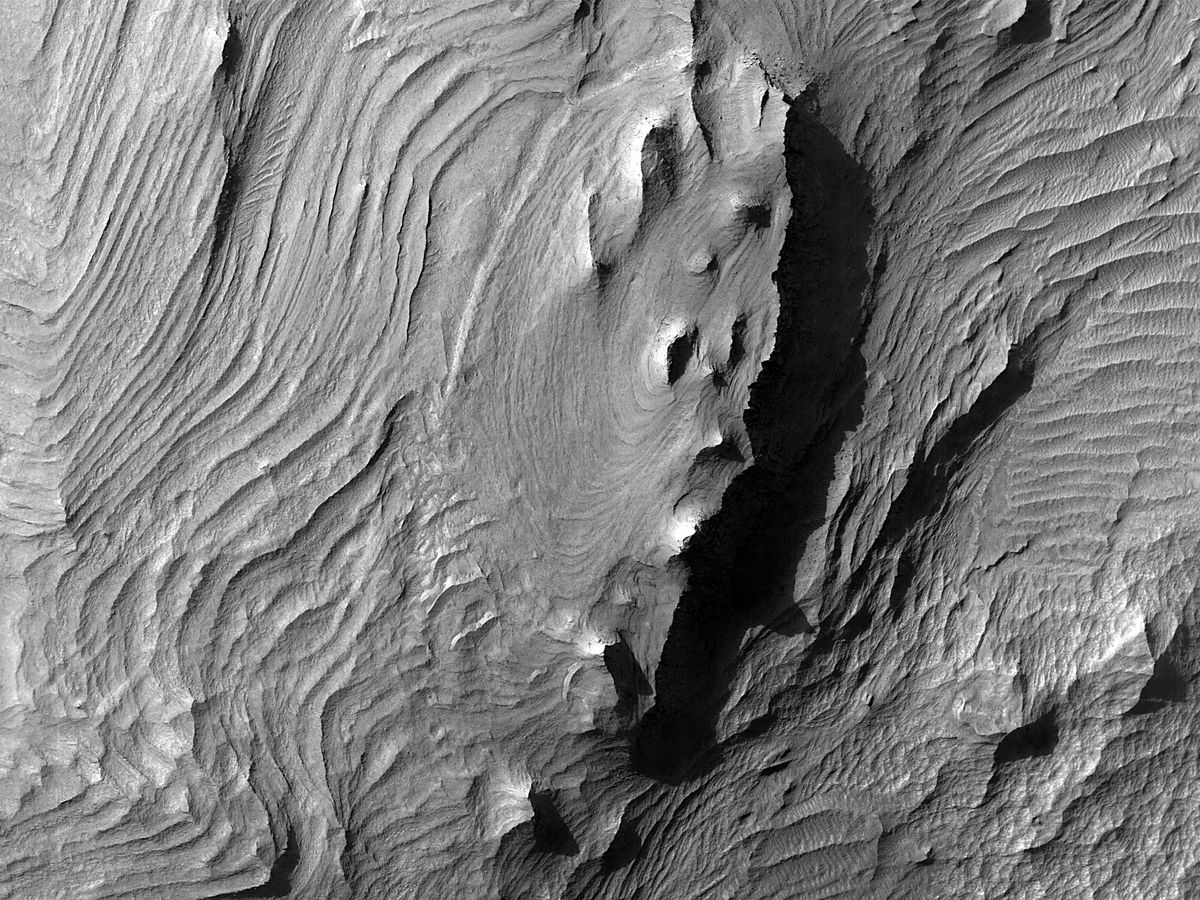Science
Related: About this forumLongest canyon in the solar system reveals new secrets -- Space photo of the week
By Jamie Carter
published 16 hours ago
NASA's Mars Reconnaissance Orbiter recently photographed Candor Chasma in Mars' Valles Marineris, the largest canyon in the entire solar system.

The folded layers of eastern Candor Chasma on Mars.Mars' Valles Marineris stretches nearly a quarter of the way around the planet's equator. (Image credit: NASA/JPL-Caltech/University of Arizona)
Mars has a huge network of canyons that stretches about 2,500 miles (4,000 kilometers) across its equator. This canyon system, called Valles Marineris, is the largest in the solar system, dwarfing Earth's largest canyon, which covers 460 miles (750 km) under Greenland's ice sheet. (Condolences to the Grand Canyon and its mere 277-mile length.)
First imaged by NASA's Mariner 9 spacecraft in 1972, Valles Marineris has been captured by the HiRISE camera on NASA's Mars Reconnaissance Orbiter many times in its 19 years in orbit. However, this geological wonder still holds many secrets.
This latest photo, taken May 24 and published last week, is of the eastern side of Candor Chasma, one of the largest canyons within Valles Marineris. What it reveals could change how planetary geologists think about Mars' ancient environment.
Using its ability to see detail down to the size of a kitchen table, HiRISE produced an image that shows layered deposits of sediment several meters thick, scientists at the Lunar and Planetary Laboratory at the University of Arizona, which developed and operates the camera, said in a description of the image. Crucially, these layers of sediment must date to after the canyon itself formed, because they appear to have been eroded, warped and bent by tectonic movements.
More:
https://www.livescience.com/space/longest-canyon-in-the-solar-system-reveals-new-secrets-space-photo-of-the-week